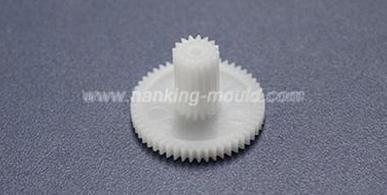

In recent years, with the progress of science and technology and the improvement of people's safety awareness, people pay more and more attention to the quality of raw materials and products. In the production of plastic injection molding parts, quality control is the key link in the processing steps.
In the process of injection molding, the quality of plastic parts is related to the quality of the plastic material used, the type of injection molding machine, mold design level and mold making quality, the setting and control of molding process parameters, the production environment and knowledge reserve, experience of operator, etc. Any problem in one of them will affect the quality of plastic parts, and bring the product defection, which requires we China injection molding factory to strictly control every step of production.
Improving quality control in your plastic injection molding process can help to ensure that your final product meets the required specifications and is free from defects. HanKing Mould has some tips to improve the quality control in your plastic injection molding process:
Establish a Quality Control Plan: Develop a detailed plan that outlines the quality control procedures to be followed at each stage of the injection molding process. This plan should identify potential defects and provide instructions on how to detect and address them.
Monitor the Process Parameters: Monitor the critical process parameters such as injection pressure, temperature, and cycle time to ensure they remain within the recommended range. This can be done using sensors and automated systems.
Conduct Regular Inspections: Conduct regular inspections of the product at each stage of the injection molding process to identify any defects. This can be done manually or with the help of automated inspection systems.
Use Statistical Process Control: Use statistical process control (SPC) techniques to monitor the injection molding process and identify any trends or patterns that may indicate a potential defect. SPC can help to detect defects early, reducing the risk of producing defective products.
Train and Educate Employees: Provide training and education to employees on quality control procedures and the importance of producing high-quality products. This can help to ensure that everyone involved in the process is aware of the standards and expectations.
Implement a Corrective Action Plan: Develop a corrective action plan to address any defects that are identified during the quality control process. This plan should identify the root cause of the defect and provide instructions on how to correct it.
Use High-Quality Materials: Use high-quality materials in the injection molding process to ensure that the final product meets the required specifications. Using low-quality materials can increase the risk of defects and reduce the overall quality of the product.
Stable and reliable plastic auxiliary equipment is also a key factor in determining product quality. Some of our auxiliary equipment came from Hengju Machinery which has 14 years of experience in manufacturing plastic auxiliary equipment, providing raw material dehumidifying and drying equipment, automatic dosing and mixing equipment, central feeding system and central chiller plant design.
By implementing these tips, you can improve the quality control in your plastic injection molding process and produce high-quality products that meet the required specifications.






 Call us on:
Call us on:  Email Us:
Email Us:  No.23, XingYi Road, Wusha Community, Chang'an Town, Dongguan City, Guangdong Province, China.
No.23, XingYi Road, Wusha Community, Chang'an Town, Dongguan City, Guangdong Province, China.